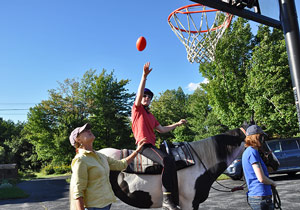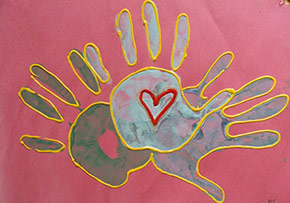What Do We Offer?
Hoof n HOPE provides equine assisted activities such as horseback riding lessons with a focus on the balance seat and classical training of the horse, therapeutic horseback riding, interactive vaulting (similar to gymnastics on horseback), and expressive arts programs.
Our services are provided by Massachusetts State licensed riding instructor(s), with certification through the Professional Association of Therapeutic Horsemanship International (PATH Intl)., Centered Riding Inc., U.S. Pony Club, TTEAM methods, and Natural Horsemanship. Working in partnership with the horse, and volunteer(s), our clients achieve a safe, enjoyable, structured yet challenging learning experience.
Working in partnership with the horse, rider, and volunteer(s), our clients achieve a safe, enjoyable, and structured learning experience, that challenges them creatively, increasing self exploration while aiding stress reduction, self confidence and creative problem solving through appropriate activities, games and learning opportunities focused around the horse or pony.
Our Vision
We are committed to increasing knowledge of the benefits of the human-animal-nature bond through educational programs, newsletters, research and publications with a future goal to conduct grants funded research studies that measure and compare brain mapping of pre and post program participants; and to study animal/human behavior (anthrozoology) by using both descriptive and experimental methods under natural and controlled conditions.




